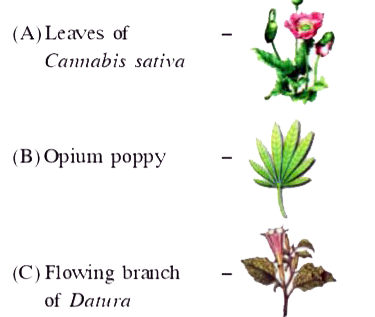Mark the correct match :
Amoeboid protozoan - All endoparasite
Flagellated protozoan - Paramoecium
Sporozoan - Absence of locomotory structure
Ciliated protozoan - Entamoeba
The correct Answer is:C
To solve the question of marking the correct match among the options provided regarding protozoans, we will analyze each option step by step.
1. Identify the Types of Protozoans:
- Protozoans are classified into four main types: Amoeboid, Flagellated, Ciliated, and Sporozoan.
2. Evaluate the First Option (Amoeboid Protozoan):
- The first option states that amoeboid protozoans are matched with "all are parasites." This is incorrect because not all amoeboid protozoans are parasites. While some, like Entamoeba, are parasitic, many are free-living.
3. Evaluate the Second Option (Flagellated Protozoan):
- The second option states that flagellated protozoans are matched with "all are parasites." This is also incorrect. Flagellated protozoans, such as Trypanosoma, can be free-living or parasitic, but they are not exclusively parasites.
4. Evaluate the Third Option (Ciliated Protozoan):
- The third option states that ciliated protozoans are matched with "all are parasites." This is incorrect as well. Ciliated protozoans, like Paramecium, are primarily free-living organisms.
5. Evaluate the Fourth Option (Sporozoan):
- The fourth option states that sporozoans are matched with "absence of locomotory structures." This is correct. Sporozoans, such as Plasmodium, do not have cilia, flagella, or pseudopodia for movement.
6. Evaluate the Fifth Option (Ciliated Protozoan and Entamoeba):
- The fifth option states that ciliated protozoans are matched with Entamoeba. This is incorrect because Entamoeba is an example of amoeboid protozoans, not ciliated.
7. Conclusion:
- The only correct match is the sporozoan with the absence of locomotory structures.
Final Answer:
The correct match is Sporozoan - Absence of locomotory structures.
- Protozoans are classified into four main types: Amoeboid, Flagellated, Ciliated, and Sporozoan.
- The first option states that amoeboid protozoans are matched with "all are parasites." This is incorrect because not all amoeboid protozoans are parasites. While some, like Entamoeba, are parasitic, many are free-living.
- The second option states that flagellated protozoans are matched with "all are parasites." This is also incorrect. Flagellated protozoans, such as Trypanosoma, can be free-living or parasitic, but they are not exclusively parasites.
- The third option states that ciliated protozoans are matched with "all are parasites." This is incorrect as well. Ciliated protozoans, like Paramecium, are primarily free-living organisms.
- The fourth option states that sporozoans are matched with "absence of locomotory structures." This is correct. Sporozoans, such as Plasmodium, do not have cilia, flagella, or pseudopodia for movement.
- The fifth option states that ciliated protozoans are matched with Entamoeba. This is incorrect because Entamoeba is an example of amoeboid protozoans, not ciliated.
- The only correct match is the sporozoan with the absence of locomotory structures.
The correct match is Sporozoan - Absence of locomotory structures.
Topper's Solved these Questions
- BIOLOGICAL CLASSIFICATIONBOOK - AAKASH INSTITUTE ENGLISHCHAPTER - BIOLOGICAL CLASSIFICATIONEXERCISE - Assignment (Section - A) Objective Type Questions
50 Videos
- BIOLOGICAL CLASSIFICATIONBOOK - AAKASH INSTITUTE ENGLISHCHAPTER - BIOLOGICAL CLASSIFICATIONEXERCISE - Assignment (Section - B) (Objective Type Questions)
35 Videos
- BIOLOGICAL CLASSIFICATIONBOOK - AAKASH INSTITUTE ENGLISHCHAPTER - BIOLOGICAL CLASSIFICATIONEXERCISE - Try Yourself
26 Videos
- BIODIVERSITY AND CONSERVATIONBOOK - AAKASH INSTITUTE ENGLISHCHAPTER - BIODIVERSITY AND CONSERVATIONEXERCISE - SECTION - D (Assertion-Reason Type Questions)
10 Videos
- BIOMOLECULESBOOK - AAKASH INSTITUTE ENGLISHCHAPTER - BIOMOLECULESEXERCISE - ASSIGNMENT (SECTION-D) Assertion-Reason Type Questions
10 Videos
Similar Questions
Knowledge Check
Mark the incorrect match .
AInsulin - ZincBHaemoglobin - IronCVitamin B12 - CobaltDChlorophyll - Chromium

